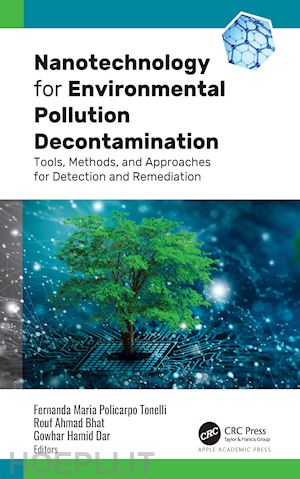Fernanda Maria Policarpo Tonelli, PhD, is affiliated with Coletivo Cientistas Feministas, Belo Horizonte - Minas Gerais, Brazil. She was previously with the Department of Morphology, Federal University of Minas Gerais, BH – Minas Gerais, Brazil. She specializes in molecular biology and has been studying biotechnological topics such as gene delivery approaches (using engineered viral particles and nanomaterials) aiming for transgenesis. She has taught topics related to biochemistry and molecular biology and has authored scientific articles and more than 30 book chapters from international publishers. She has also reviewed various articles/book proposals. She has presented and participated in many national and international conferences and has helped organize various scientific events. Dr. Tonelli has also dedicated herself to the promotion science and technology through co-funding with an oil and gas corporation. Dr. Tonelli is active in scientific advocation groups for women. Her efforts as an researcher have been recognized with various awards, including "For Women in Science Brazil-L’Oreal/UNESCO/ABC" and "Under30 Brazil–Forbes" and with certificates of merit. Rouf Ahmad Bhat, PhD, is Assistant Professor at Cluster University, Srinagar, Jammu and Kashmir, India, specializing in limnology, toxicology, phytochemistry, and phytoremediation. Dr. Bhat has been teaching graduate and postgraduate students of environmental sciences for the past three years. He is an author of more than 53 research papers and 35 book chapters and has published more than 20 books with international publishers. He has presented and participated in numerous state, national, and international conferences, seminars, workshops, and symposiums. Dr. Bhat has worked as Associate Environmental Expert in a World Bank-funded flood recovery project and as environmental support staff in several Asian Development Bank (ADB)-funded development projects. He has received many awards for his services to the science of water testing and air and noise analysis. He has served as an editorial board member and reviewer for several international journals published by Elsevier, Springer Nature, Taylor and Francis, SAGE and Wiley. Dr. Bhat continues to write and experiment with the diverse capacities of plants for use in aquatic pollution. Gowhar Hamid Dar, PhD, is Assistant Professor in Environmental Science, Sri Pratap College, Cluster University Srinagar, Department of Higher Education (Jammu and Kashmir), India, where he has been teaching for many years. He has a PhD in Environmental Science with a specialization in Environmental Microbiology (fish microbiology, fish pathology, industrial microbiology, taxonomy and limnology). He has published more than 40 papers in international journals of repute and several books with international publishers. He is guiding a number of students for their master‘s theses. He has been working on the isolation, identification, and characterization of microbes; their pathogenic behavior; and impact of pollution on the development of diseases in fish fauna for the last several years. In addition, he also acts as a member of various research and academic committees. He has received many awards for his services toward science and development.











